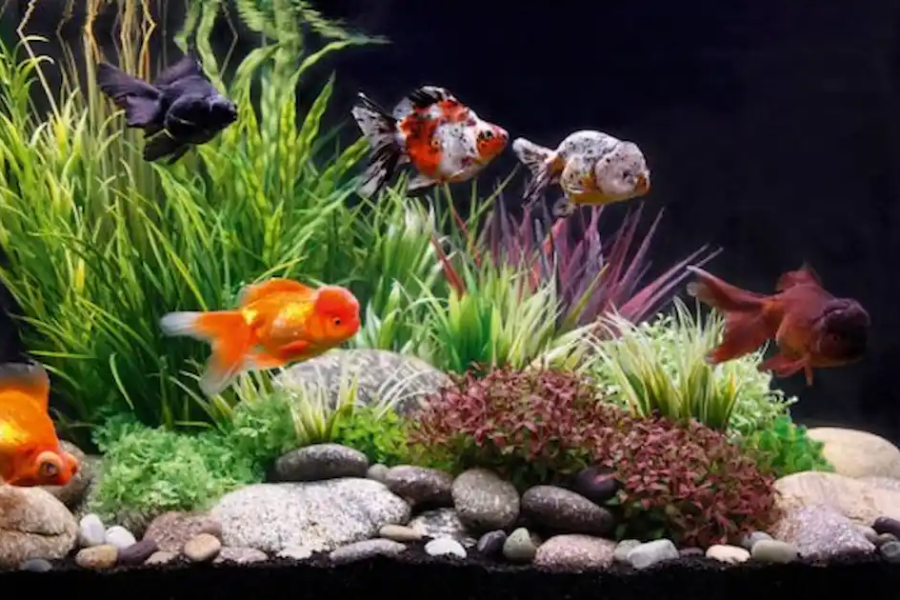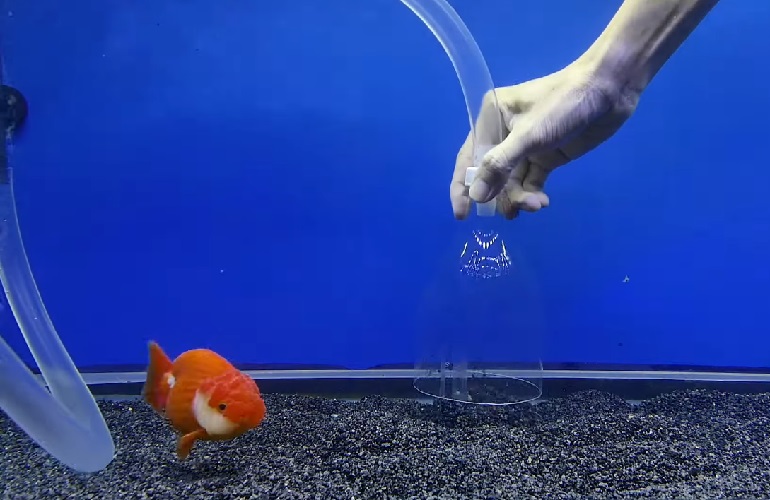
Dive right in as we delve into the mysterious world of Carp Pox Virus in Goldfish. Just as the shiniest stars in Hollywood are not immune to pitfalls, our glistening goldfish – the glitzy celebrities of the aquarium realm – too face challenges. This particular aquatic adversary, originating from the deep chronicles of fishy folklore, threatens to tarnish their radiant beauty.
Embark on this aquatic adventure as we uncover the identity of this underwater foe, gauge its menacing effects, strategize a counterattack, and ultimately discover how to guide our finned friends to a harmonious post-pox existence.
Understanding Carp Pox Virus in Goldfish
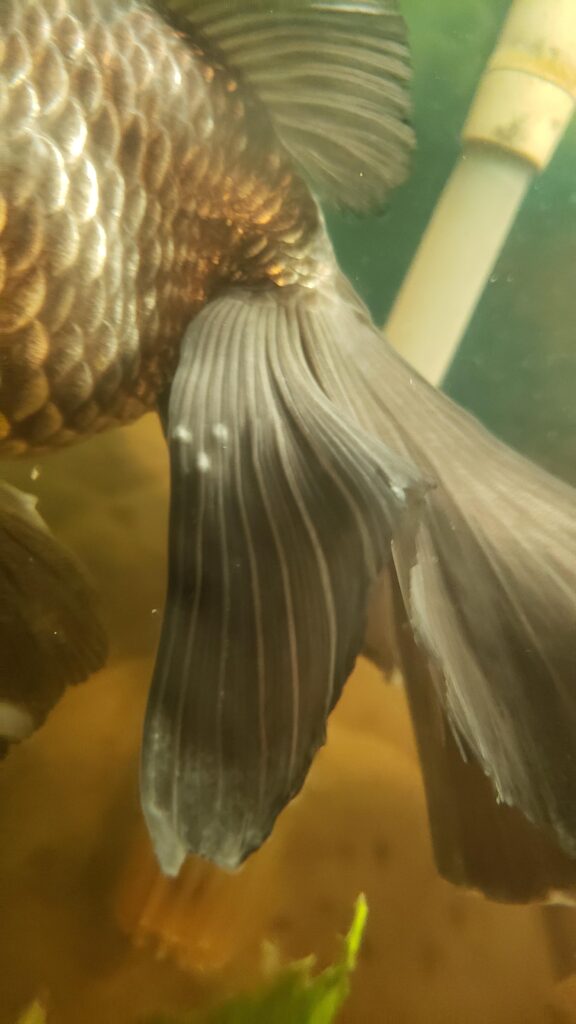
Buckle up, goldfish enthusiasts! Here’s a piece of skinny dip into Carp Pox Virus. Sounds scary? Don’t go gold yet. Let’s dive into the history and groundwork first.
History of Carp Pox Virus
Many moons ago, Carp Pox Virus (CPV), originated from koi carps. Oh, the irony! This viral disease is known as the “koi herpesvirus”. Koi fish passed this unwanted gift to our innocent goldfish via sharing the same water. A pleasant neighbor, I’d say!
Here’s a fun fact. Despite its terror, CPV lacks a grandeur entrance to the viral world records. It wasn’t until the 1970s that scientists finally took notice of this sneaky culprit. They finally connected the hideous warts with this viral monster.
Why Goldfish Are Susceptible to Carp Pox Virus
Now, you might be wondering, “Why my gold buddy?” Well, goldfish and koi carp both hail from the carp family tree. Sharing a family means sharing some family baggage as well. Unfortunately, for our gilded pals, the baggage here is inherited susceptibility to CPV.
Owing to their genetic link with koi carps, goldfish become a perfect hosting party for the virus. Combine it with lousy water conditions, and you’ve got a proper Carp Pox Virus boilover.
Alright, hold onto your fins. Are you already reaching out for the net to scoop out your fishy friend? Hold on! Let’s unravel the symptoms and the causes of CPV in the next section. Your little swimmer might just be showing off some innocent blemishes. Give them the benefit of the doubt!
Identifying Carp Pox Virus in Goldfish
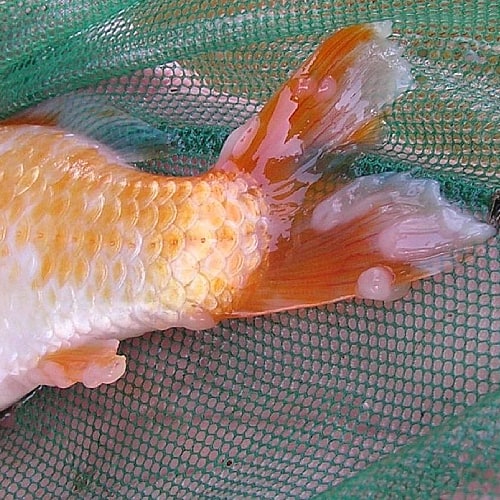
Isn’t it delightful to see your goldfish swimming around, their scales glimmering under the light? Suddenly, you spot something unusual – some unexpected blemishes, perhaps. Now you might be wondering, could this be the Carp Pox Virus?
Know the Signs: Symptoms of Carp Pox Virus
Breathe in, breathe out. It’s best to remain calm and look out for signs. Is your goldfish exhibiting ‘waxy,’ ‘slimy’ lesions on its skin? These are often colorless or pearl-like growths. But mind you, they could also appear as grayish-white patches. Usually, you’ll spot them around your goldfish’s mouth, fins, or gills. If these symptoms sound familiar, your goldfish might have caught the Carp Pox virus. Remember, knowledge is power! By identifying these symptoms early, you can jump-start treatment and increase your goldfish’s chance of recovery.
Causes and Transmission Methods of Carp Pox Virus in Goldfish
Notice those symptoms on your goldfish? Alright, time to crack the case. Carp Pox virus, also known as ‘fish herpes,’ is a viral infection. It’s usually transmitted through direct contact with infected fish. It loves low temperatures, with outbreaks often seen during cooler months. So, keep an eye out if your goldfish tank’s temperature is dipping low!
That brings us to the next vital section. Now that we’ve recognized the villain called Carp Pox virus and its aliases, let’s dig deeper into the real impact this could impose on our lovely goldfish. Prepared to dive in? Trust me, it’s less daunting with knowledge on your side.
Impact of Carp Pox Virus on Goldfish
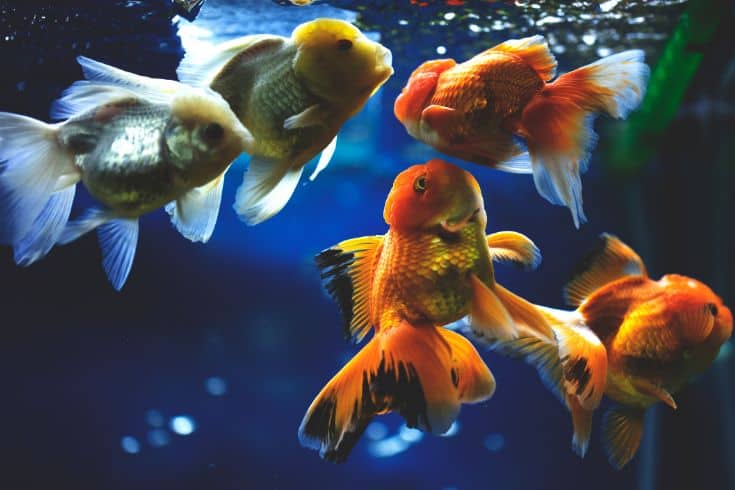
Hello, fellow goldfish lovers! Carp Pox Virus can sneak up on our scaly friends pretty quickly. It’s like that unexpected downpour on a sunny day. Not cool, right? Let’s dive into the impacts of this virus on our little “Goldies.”
Effects on Goldfish Health
To paint a rather colorful picture, imagine a pizza without cheese. Odd, isn’t it? That’s what our goldfish can look like when struck by Carp Pox; blotchy skin, and loss of color. Carp Pox can cause lumpy, waxy skin lesions, often looking like clouded patches or daisy-white obstructions on the gills and fins. Sounds pretty drastic, doesn’t it? But that’s not all. It mars the graceful beauty of our aquatic friends and can lead to a loss of appetite too.
Impact on Goldfish Lifespan
Now, don’t get your diving gear in a twist. It’s serious but not always fatal. Carp Pox mainly affects juvenile goldfish. And though it can reduce their lifespan or vitality, it doesn’t have to be a death sentence. Effective treatment can help our Goldies bask in the glow of their golden years.
Alright, fish enthusiasts, we’ve plunged into the impacts. You might be worrying about your golden buddies. Fear not! Knowing is half the battle. Next, we’ll bob into the sea of treatments and remedies to battle this sneaky Carp Pox villain. Hang onto your fishing rods, because we’re going for a deep dive – to victory!
Coping with Carp Pox Virus in Goldfish

Life with a goldfish friend isn’t pure bubbles and spectacle. Like any good relationship, it requires effort, especially when diseases like Carp Pox Virus slide into the mix. Clearly, no one expected to become an amateur piscine pathologist.
Treatments and Remedies
First things first, how do we put “sick as a fish” in the rear-view mirror? Primarily, you have a couple of options to choose from: antibiotics and water treatments.
- Water Treatment with Antibiotics: This is the most straightforward method to help your goldfish recover from Carp Pox Virus. Instead of trying to get your fish to swallow a pill, simply add the prescribed antibiotic directly to their tank. This treatment is absorbed through the goldfish’s skin and gills, essentially giving them an immune-boosting spa day.
- Prescribed Medications: Beyond general antibiotics, there are specific medications designed to combat Carp Pox Virus. It’s crucial to consult a veterinarian for proper guidance on the right medication and dosage. You might be eager to play Dr. Dolittle, but this is a situation best left to the professionals.
- Ongoing Care and Patience: Although treatments may not fully eliminate all symptoms of Carp Pox Virus, they can significantly reduce the risk of further complications. It’s important to be patient as your goldfish’s recovery will take time.
Breathe easy now; we’re moving from treatments to the preventive side of the coin, keeping Carp Pox Virus from knocking at your aquarium’s door.
Prevention and Control Methods
They say ‘prevention is better than cure.’ Well, whoever ‘they’ are, they’re spot on when it comes to keeping aquatic environs healthy. It’s a two-word game — cleanliness and quarantine.
Keep that habitat Crystal Clean. Eliminate waste regularly, change the water frequently, and ensure the tank doesn’t turn into a dumpster dive. A clean aquarium is like garlic to the vampire-like Carp Pox Virus.
Next up, Quarantine newbies! Sieve out the sick, and you’ve got yourself a good buffer. Introducing new goldfish? Keep them in separate quarters for the first few weeks, scrutinizing for problematic signs.
Alright, your defense isn’t impenetrable, but you’re in a stronger position now to keep Carp Pox Virus at bay. Don’t let the worry weigh you down, though. Even if your fish dip fins into troubled waters, remember, there’s life after Carp Pox Virus! In the next section, we’ll tackle supporting your goldfish post-illness. Buckle up, and let’s dive deeper!
Supporting Your Goldfish After Carp Pox

Your little aquatic pal has just had an adventure with the Carp Pox Virus. A victory, we hope, if everything went swimmingly (pun intended). Now it’s all about aftercare and setting your finned friend up to thrive.
Post-Disease Care
After Carp Pox, your goldfish will need a little extra TLC. Think of it as a fish version of a spa day. Maintain a constant water temperature and good water quality. Keep it clean – who doesn’t love fresh sheets after being unwell, right? Lightly feed your goldfish with nutrition-packed foods to rev up its immunity.
Remember, healing takes time. Your patience now might just make you a hero in your goldfish’s eyes – if they weren’t quite so googly. Keep close but stress-free observation on your finned buddy for any signs of a relapse. Consult your vet if need be.
Now that we’ve flapped around in the healing waters, let’s dive into long-term actions required to keep Carp Pox at bay. It’s up to us to make their water world as carp pox-unfriendly as possible!
Creating a Healthy Habitat
Our finned friends don’t need aquarium décor from a five-star hotel, but a clean, welcoming home is essential. Regular water changes, tank cleaning, and a healthy, varied diet are paramount. After all, you wouldn’t like eating stale food, would you?
Maintain a balanced temperature. Too hot or too cold, and your goldfish might catch a cold – or another bout of Carp Pox. Not fun at all!
Consider adding aquarium salt to the water. It can make your goldfish more resilient against diseases. It’s like giving your fish a secret weapon against any lurking health offenders.
Sweetly whispering lullaby tunes to your goldfish at night might not be necessary, but hey, whatever floats your boat – or your fish.
As we swim away from this topic, don’t forget: recovery for your goldfish doesn’t end when the symptoms go away. Think of Carp Pox as a wake-up call to amp up your goldfish care game. So get splashing, folks!
To Sum Up
After understanding the origins and characteristics of Carp Pox Virus, you as a goldfish parent should know its potential impacts. From health effects to lifespan reduction, the virus poses significant threats to your beloved aquatic pets. Understanding its symptoms and transmission methods can aid you in quickly identifying the disease thereby saving precious time.
Furthermore, accustoming yourself with effective treatments, remedies, and prevention methods can strengthen your arsenal against this virus. Finally, remember, fighting Carp Pox doesn’t end with curing it. Post-disease care and maintaining a healthy habitat are essential to ensure your goldfish thrives and leads a lively, happy life post-recovery.
Frequently Asked Questions (FAQ)
Question: What is Carp Pox Virus?
Answer: Carp Pox Virus, also known as ‘fish herpes,’ is a common disease affecting goldfish. It causes waxy, skin-like growths on the fish which can impact their overall health.
Question: Why are goldfish susceptible to Carp Pox Virus?
Answer: Goldfish are coldwater fish, and Carp Pox tends to thrive in colder water temperatures, making goldfish more susceptible to the virus.
Question: How can I identify Carp Pox Virus in my goldfish?
Answer: Look out for unusual lumps or growths on your fish’s skin. These may appear as waxy, white, or translucent patches.
Question: Is Carp Pox Virus deadly for goldfish?
Answer: While Carp Pox isn’t typically fatal, it can stress the fish and make it more susceptible to other diseases, which could eventually result in death.
Question: What are some treatments for Carp Pox Virus?
Answer: Although there’s no cure for Carp Pox, improving the living conditions of your fish, such as increasing water temperature and maintaining high-quality water conditions, can help manage symptoms.
Question: Can Carp Pox Virus be prevented?
Answer: Maintaining a clean and well-balanced aquarium environment, and avoiding sharing equipment between tanks, can help prevent the spread of Carp Pox Virus.
Question: How can I support my goldfish after they’ve had Carp Pox?
Answer: Continue to provide a clean, stress-free environment for your fish, and ensure it gets a balanced diet. Regularly monitor for symptoms to ensure the disease doesn’t return.


